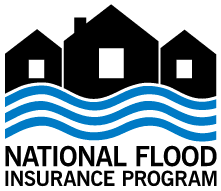One of the bills calling for the use of catastrophe bonds, collateralized reinsurance and other private market risk transfer tools to lower the risk held by the U.S. National Flood Insurance Program (NFIP) will now be heard before a Senate committee.
 So far a number of House committee bills have featured calls for the de-risking of the NFIP through the issuance of flood catastrophe bonds, or whatever private market risk transfer and reinsurance is most affordable and practical at the time.
So far a number of House committee bills have featured calls for the de-risking of the NFIP through the issuance of flood catastrophe bonds, or whatever private market risk transfer and reinsurance is most affordable and practical at the time.
This bill, the National Flood Insurance Program Reauthorization Act of 2017, aims to reauthorise and also reform the NFIP, which is set to expire at the end of September this year.
Brought before the U.S. Senate Committee on Banking, Housing and Urban Affairs by its Chairman Mike Crapo (R-Idaho) and Ranking Member Sherrod Brown (D-Ohio), this bill is designed to serve as a baseline from which legislation can be created to extend the existing national flood insurance program authorisation for six years and reform areas of its operation including risk mitigation, mapping and program improvements, as well as approve an increased use of risk transfer and a wider range of risk transfer structures that could be used.
On the topic of reinsurance and risk transfer, the bill says:
“The Administrator may consider any form of risk transfer, including traditional reinsurance, catastrophe bonds, collateralized reinsurance, resilience bonds, and other insurance-linked securities, in order to—
“(A) maximize pricing competition and the diversity of sources of capital; and
“(B) secure the best value for the flood in- surance program.”
It’s wording that has appeared in a number of the bills put before House committees so far this year and appears to have become almost a standard inclusion for NFIP extension and reform efforts, which is encouraging as politicians will be getting used to seeing these calls for a more efficient approach to de-risking the NFIP through private markets.
The opportunity to down-size the NFIP using private reinsurance, capital markets and risk transfer is clearly a priority and legislators must by now be aware that market conditions to achieve this are about as conducive as they have ever been.
On the other hand, the opportunity to de-risk by allowing the private insurance market to take on more flood risk is also clear, but not being addressed in as straight forward a manner in the bill.
Some observers have decried the fact that many of the reform bills fail to make it clear that private insurers should be able to operate on a level basis with the NFIP when seeking to underwrite private flood risk.
This is a missed opportunity, as the glut of reinsurance capital and interest from capital markets could actually help to ensure even more risk is taken away from the NFIP and passed into the private markets.
Reinsurance and ILS capital could back the primary property insurers that want to expand into flood risk, or even back the underwriting of flood risks more directly through the MGA model we see in some catastrophe exposed property lines today.
There remain concerns about what happens once flood risk ends up privatised and how are rates controlled to ensure affordability for homeowners. But perhaps the answer to this is the NFIP remaining as a much smaller insurer of last-resort, what it was designed for anyway, so any risks that are not suitable for the private market remain in (or go back to) the Federal backed flood insurance pool.
A two-pronged approach to downsizing the NFIP, of greater use of risk transfer (traditional and alternative) plus an open approach to allowing flood insurance policies to be privatised, could down-size the NFIP much more rapidly than either on its own.
The private market is ready to deal with flood risks and while NFIP flood catastrophe bonds could still be some way off, the more it is raised in the legislative process the more likely it is that we will see a more capital agnostic approach to hedging the NFIP in future.
Also read: Flood cat bonds? Flood sidecars? How can the NFIP de-risk using ILS?
 View all of our Artemis Live video interviews and subscribe to our podcast.
View all of our Artemis Live video interviews and subscribe to our podcast.
All of our Artemis Live insurance-linked securities (ILS), catastrophe bonds and reinsurance video content and video interviews can be accessed online.
Our Artemis Live podcast can be subscribed to using the typical podcast services providers, including Apple, Google, Spotify and more.































